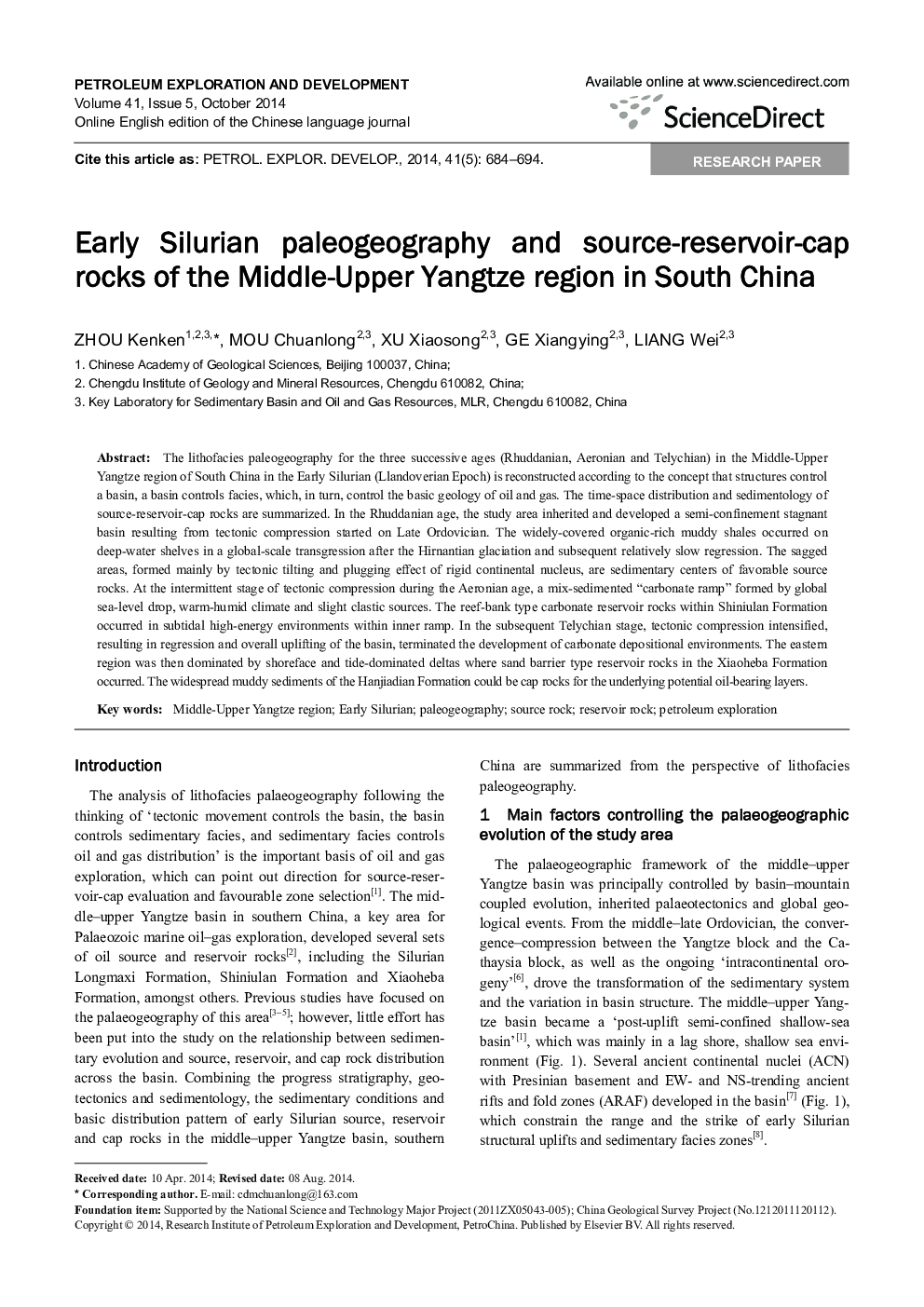| کد مقاله | کد نشریه | سال انتشار | مقاله انگلیسی | نسخه تمام متن |
|---|---|---|---|---|
| 4720033 | 1355309 | 2014 | 11 صفحه PDF | دانلود رایگان |

The lithofacies paleogeography for the three successive ages (Rhuddanian, Aeronian and Telychian) in the Middle-Upper Yangtze region of South China in the Early Silurian (Llandoverian Epoch) is reconstructed according to the concept that structures control a basin, a basin controls facies, which, in turn, control the basic geology of oil and gas. The time-space distribution and sedimentology of source-reservoir-cap rocks are summarized. In the Rhuddanian age, the study area inherited and developed a semi-confinement stagnant basin resulting from tectonic compression started on Late Ordovician. The widely-covered organic-rich muddy shales occurred on deep-water shelves in a global-scale transgression after the Hirnantian glaciation and subsequent relatively slow regression. The sagged areas, formed mainly by tectonic tilting and plugging effect of rigid continental nucleus, are sedimentary centers of favorable source rocks. At the intermittent stage of tectonic compression during the Aeronian age, a mix-sedimented “carbonate ramp” formed by global sea-level drop, warm-humid climate and slight clastic sources. The reef-bank type carbonate reservoir rocks within Shiniulan Formation occurred in subtidal high-energy environments within inner ramp. In the subsequent Telychian stage, tectonic compression intensified, resulting in regression and overall uplifting of the basin, terminated the development of carbonate depositional environments. The eastern region was then dominated by shoreface and tide-dominated deltas where sand barrier type reservoir rocks in the Xiaoheba Formation occurred. The widespread muddy sediments of the Hanjiadian Formation could be cap rocks for the underlying potential oil-bearing layers.
Journal: Petroleum Exploration and Development - Volume 41, Issue 5, October 2014, Pages 684-694